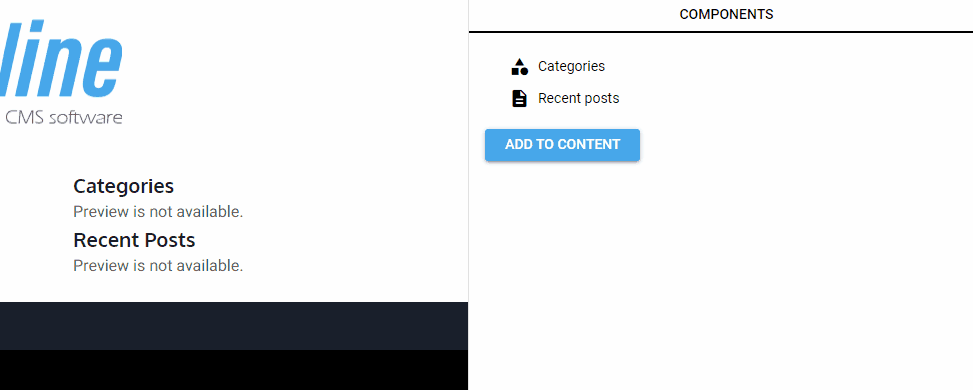Theming
A NumberNine theme is a Symfony bundle that handles rendering of the website. Unless you choose another theme or build your own, the default theme is ChapterOne.
Every template is overridable in your own /templates/theme/ directory.
ChapterOne
ChapterOne is a full featured theme for NumberNine that features the following:
- TailwindCSS
- Responsive design
- Hundreds of pre-designed blocks editable in the page builder
- Configurable base colors
- Several page templates (full width, no header, left sidebar, right sidebar, etc.)
IMPORTANT NOTE
ChapterOne is still under development. Features above may not be all implemented yet.
Page templates
Page templates are layouts for your index pages or entity pages.
An entity page is a page that will render a specific entity, for example a blog post, a page, a product, a portfolio gallery, an architecture project.
An entity page can have many templates, based on its content type.
Here's how NumberNine knows which template to choose, sorted by highest priority to lowest. Note that your /templates/theme/ directory has greater priority than theme's templates. This way you can override any theme's template.
content_type_name/single.custom_template.html.twigYou can assign a custom template to your page in administration panel. In this case, this template will have the highest priority above all others.
content_type_name/single_slug-of-your-entity.html.twigThe slug of an entity is created from its title.
content_type_name/single_214.html.twigThis template will be selected if your entity ID is 214.
content/single.html.twigA generic template that all content types fallback to.
In the above examples, content_type_name can be post, page, product or any other content type that you create.
Components
A component is a micro-controller to which you'll delegate the rendering of a region of your page. It's similar to including another template in your Twig template, but with PHP logic in between.
This feature is aimed to help developers to write better code by splitting what could be a huge controller into many little controllers who handle one concern at a time.
You don't have to use components if you don't want to.
Learn how to create and use a component...
Shortcodes
Also known as BBcodes, shortcodes are widely used in CMS software like WordPress or Drupal.
While the purpose of a component is purely developer-oriented, the shortcode is purely user-oriented. They are meant to give the opportunity to the end user, who doesn't know how to code, to customize its website pages with dynamic components represented by a text string.
As an example, a user could type the following text in the page editor:
What a great day today in Paris.
[weather location="Paris"]
The part [weather location="Paris"] is a shortcode, named weather with one parameter location whose value is Paris. When the page renders, shortcodes are interpreted and obviously not presented to the visitors like this, but rendered with a dedicated template.
Now what's interesting in NumberNine is that shortcodes are, just like components, isolated micro-controllers running as services.
What more? Shortcodes are also meant to be page builder elements. Any shortcode you create can be easily integrated to the page builder without having to recompile admin source.
Learn how to create and use a shortcode...
Areas
A theme may contain areas. Areas are common to several pages and generally used in templates. They are editable through the page builder and are rendered as text in the database.
A typical use of areas is the site header, the footer, a blog sidebar, etc.
To make them editable and dynamic, they accept shortcodes. As an example, a blog sidebar may look like this:
[categories title="Categories"]
[recent_posts title="Recent Posts" count="10"]
Obviously, the end-user won't have to write its sidebar this way, and will directly use the page builder like this:

